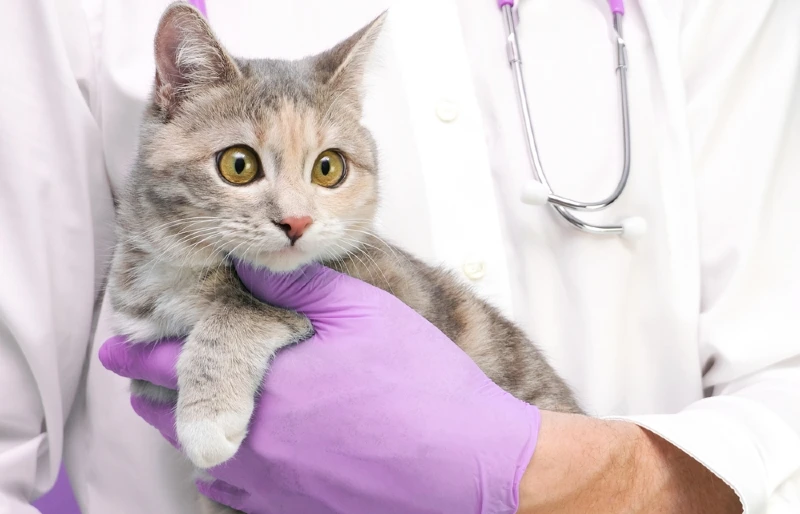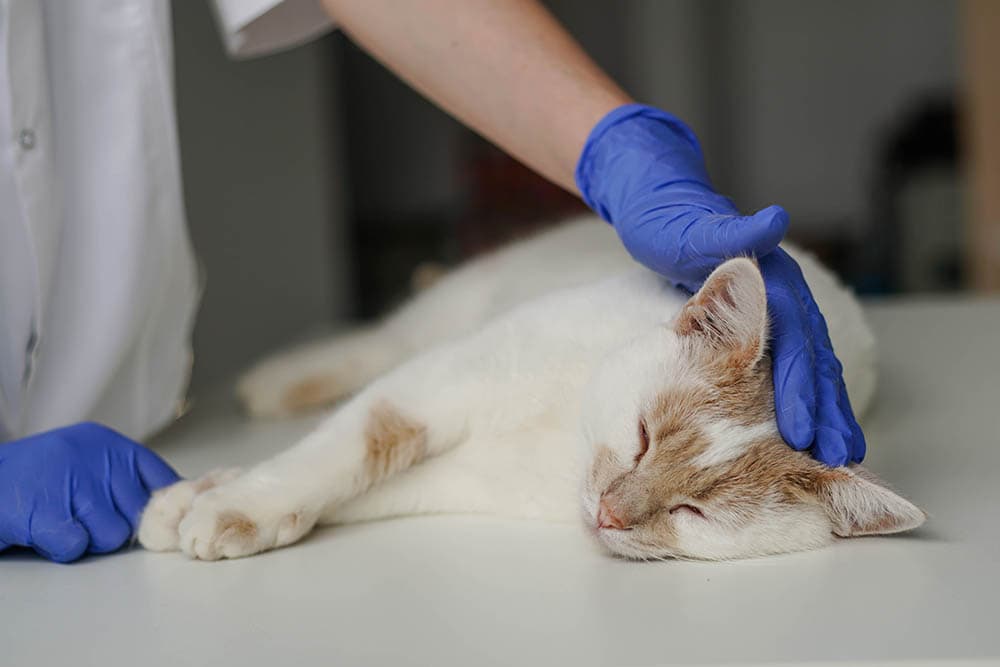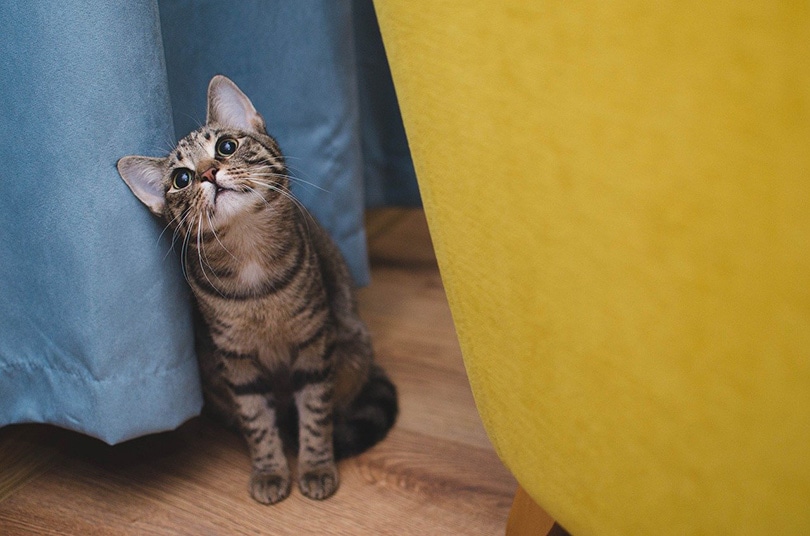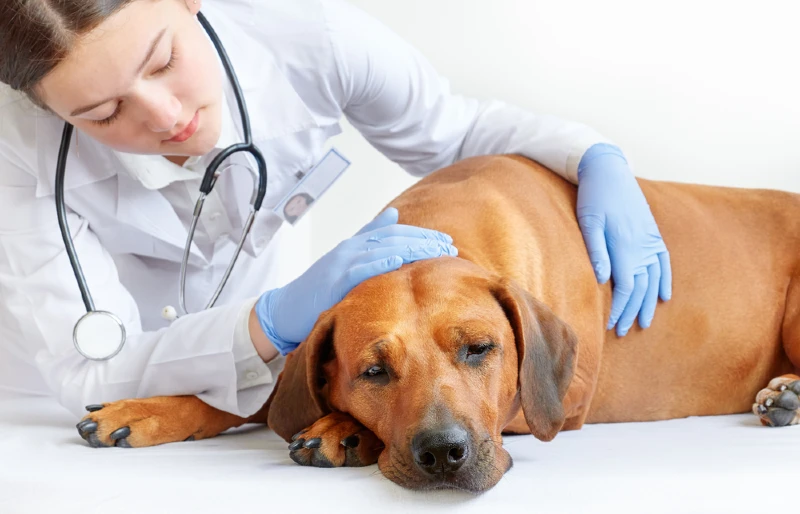Can a Cat Recover From a Stroke? Our Vet Answers

Updated on

Click to Skip Ahead
It can be distressing to be told by your veterinarian that your beloved cat has had a stroke. The news will probably leave you wondering if your cat will recover and be back to its normal self.
Fortunately, it’s possible for a cat to recover from strokes, in fact, strokes tend not to be as debilitating in animals as they are in people. Most cats make a full recovery within a few weeks.1 However, if a vital part of the brain is affected or if the cat experiences severe complications from the stroke, the stroke may be fatal. The prognosis also depends on the underlying cause of the stroke and whether it can be treated.
What Is a Stroke?
A stroke, or cerebral vascular accident (CVA), is the term used to describe the sudden interruption in blood supply to any part of the brain. If an area of the brain is deprived of its blood supply (and therefore of oxygen and nutrients), the brain cells in this area become damaged or die, and brain function is lost.
- Ischemic stroke: this type of stroke is caused by an obstruction in the blood vessels of the brain e.g. a blood clot.
- Hemorrhagic stroke: this type of stroke is caused by bleeding from a blood vessel inside the brain or in the spaces around the brain.

What Causes a Cat to Have a Stroke?
There are many diseases that can cause a cat to have a stroke, including:
- High blood pressure from kidney disease, an overactive thyroid, or heart disease
- Migrating worms (cuterebra)
- Blood clotting disorders e.g. rat bait poisoning, congenital clotting diseases, or immune-mediated diseases
- Inflammation of the arteries
- Head trauma
- Brain tumors
However, in many cases, the cause of the stroke is never identified.
What Signs Will a Cat Show if It Has Had a Stroke?
The symptoms that a cat will show if it has had a stroke are quite different from those seen in people. A drooping face or weakness on one side of the body are common signs that a person has had a stroke, however, these signs are rarely seen in cats.
Some of the possible signs that a cat may show if it has had a stroke include the following:
- Head tilt
- Circling
- Falling
- Change in mental alertness
- Disorientation
- Loss of balance
- Loss of vision
- Involuntary eye movements
- Seizures
These symptoms are not specific to strokes and may also be seen with other types of neurological diseases.
The symptoms of a stroke tend to appear suddenly and may become worse over a 24- to 72-hour period, followed by a slow or partial recovery. Unfortunately, not all cats recover. The symptoms and their severity depend on the region of the brain affected and the amount of brain tissue affected.

How Is a Stroke Diagnosed?
Your veterinarian may suspect that your cat has had a stroke based on the signs that it is showing. Since other neurological conditions may have the same symptoms as a stroke, your veterinarian will want to perform tests to exclude these diseases. Underlying diseases that may have caused the cat to have a stroke, will also need to be identified. This process often requires extensive testing such as blood work, blood pressure testing, imaging, and spinal fluid analysis.
In order to definitively diagnose a stroke, it is necessary to get an image of the affected cat’s brain using magnetic resonance imaging (MRI) or computed tomography (CT).
What Is the Treatment for a Stroke?
There is unfortunately no specific treatment that can repair the brain damage caused by a stroke. The treatment for a stroke tends to be supportive and may include IV fluids, oxygen, medication to lower high blood pressure, and anti-seizure medication. If the underlying cause of the stroke is identified, the underlying disease is treated in an attempt to prevent future strokes from occurring. Some cats may require nursing care while they recover and will need to be fed, cleaned, and assisted when using the litter box. Physical therapy may also help with recovery.
In general, the long-term prognosis is good in cats who are treated early and given the supportive care they need.
What Can I Do to Help Prevent My Cat From Having a Stroke?
Unfortunately, not all strokes are preventable. However, ensuring that your cat stays healthy can make a stroke less likely. Regular veterinary checkups are important as they can help identify underlying diseases. The early detection and treatment of underlying diseases can help reduce your cat’s chances of having a stroke.
Featured Image Credit: lev.studio, Shutterstock














